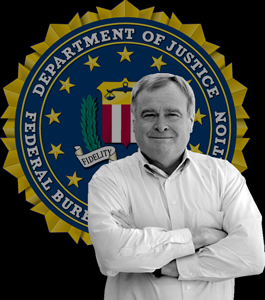Louis Freeh
“Former FBI Agent Gary Noesner’s excellent treatise on hostage negotiation, ‘Stalling for Time,’ is the state-of-the-art casebook on the best techniques for conducting life-saving crisis management involving society’s most dangerous and violent actors under the most difficult circumstances known to law enforcement officers. This insightful, intelligent and professionally written anthology of real life cases and crises is a ‘must read’ for every law enforcement operator and first responder. Noesner has a great gift of combining the instructional elements of hostage negotiation with the exciting and edge-of-your-seat first hand narratives of dangerous hostage situations as they unfold before the reader. Consequently, the teaching value of this compendium of best hostage negotiation practices and principles is delivered with excitement and satisfaction—even to those readers who are seasoned law enforcement officers.
Taking his audience on an action-packed journey from the 1991 Talladega prison riot, through the disastrous hostage situations at Ruby Ridge (1992) and Waco (1993), to the long but peaceful resolution of the 1996 Freeman siege in Montana, Noesner impressively diagrams the steep ‘learning curve’ which the FBI traversed as it matured from a ‘one-size-fits-all’ hostage resolution protocol to a more sophisticated, but ultimately safer crisis management capability. Initially, FBI leaders and operatives tended to view hostage negotiation as simply another law enforcement option which might be tried but routinely was seconded to the preferred use of military-styled lawful force.
In an earlier time, the FBI Hostage Negotiator, skilled or otherwise, was conventionally viewed as a secondary option to a SWAT-led raid which was oftentimes the usual method of resolving hostage situations. Moreover, whoever happened to be in charge of the FBI contingent at the hostage-taking venue was automatically invested with the authority to decide whether and if a negotiation was to be conducted in lieu of a tactical resolution. In most every case, the FBI official making these decisions lacked any training or knowledge of the principles and tactics relevant to successful hostage negotiations. This ‘imbalance’ between the FBI’s tactical and negotiator assets at times resulted in flawed operations and tragic outcomes, as many experts argued regarding Ruby Ridge and Waco.
Noesner’s major contribution to the modern science of hostage negotiation is the invaluable knowledge that in a hostage taking crisis, the seasoned negotiator has to have an equal ‘seat at the table’ with the experienced tactical operative. More importantly, the senior manager making the final decisions about how to resolve a fast-moving, dangerous situation needs to have the training, knowledge and judgment to balance the two options and apply the one which is most likely to result in the least amount of harm and loss of life. Appropriately quoting Kipling’s maxim that “If you can keep your head when all about you are losing theirs,” Noesner makes a compelling case for the powerful lesson learned from his many years of hands-on crisis management—-take whatever time necessary to negotiate this out the right way. For this extraordinarily critical principle and fascinating textbook, we all owe him a debt of professional and personal gratitude.”
Louis Freeh
FBI Director (Former)

